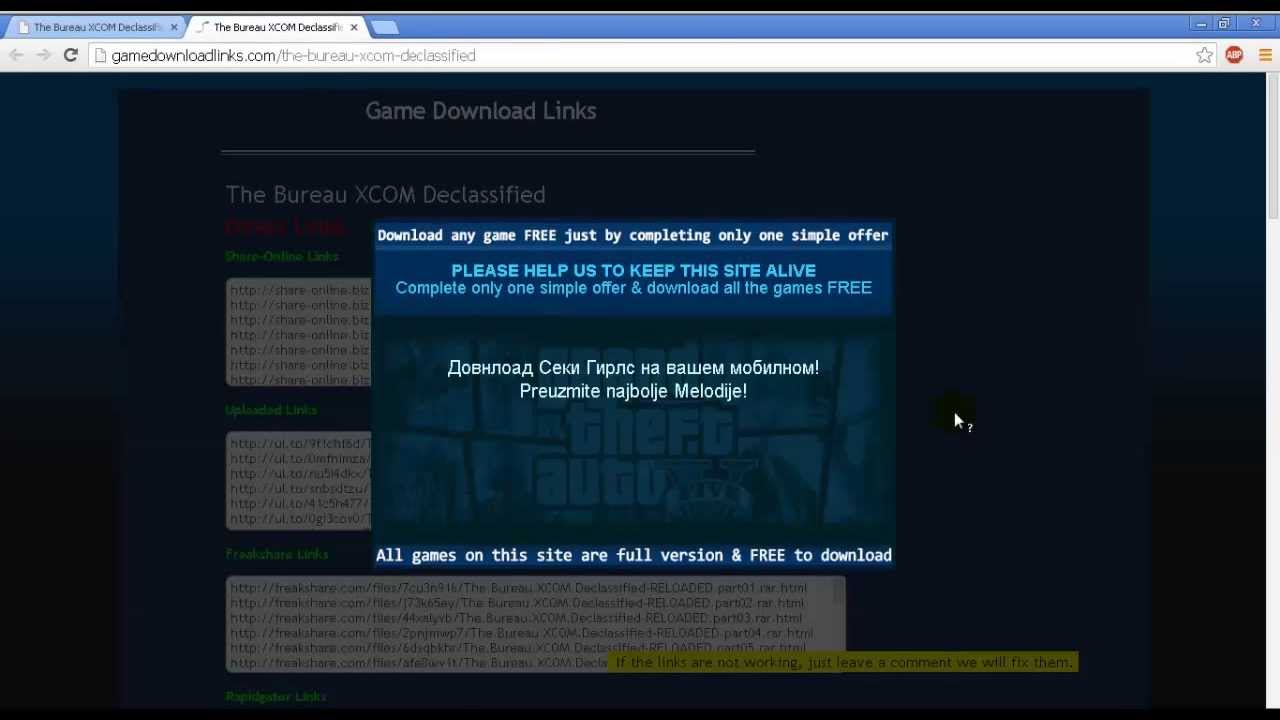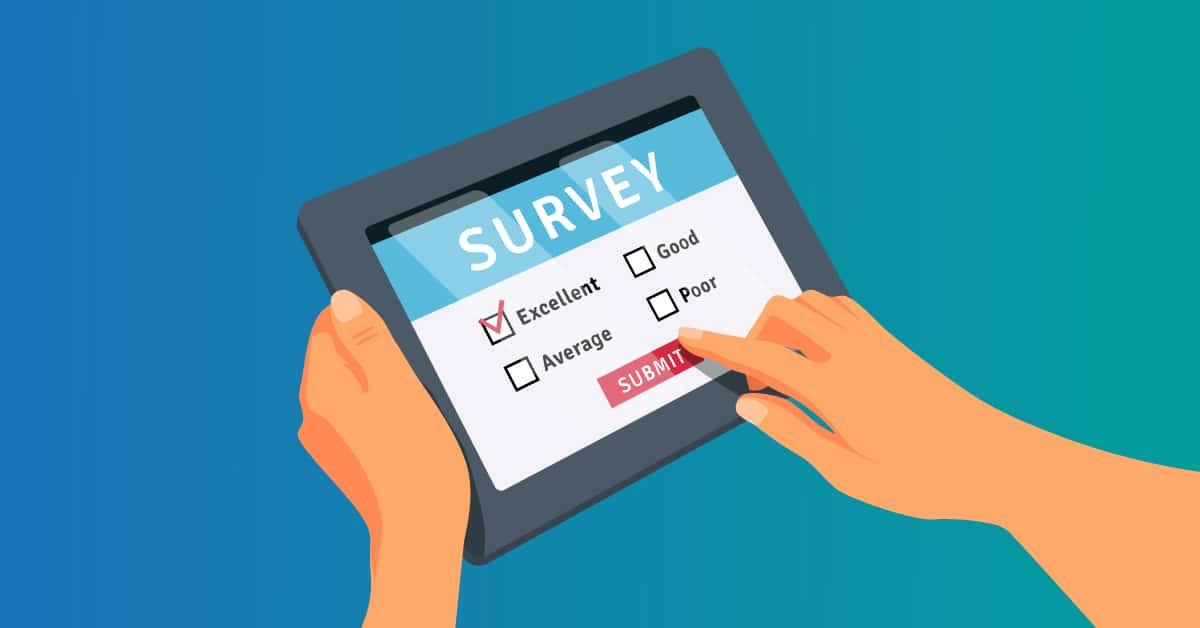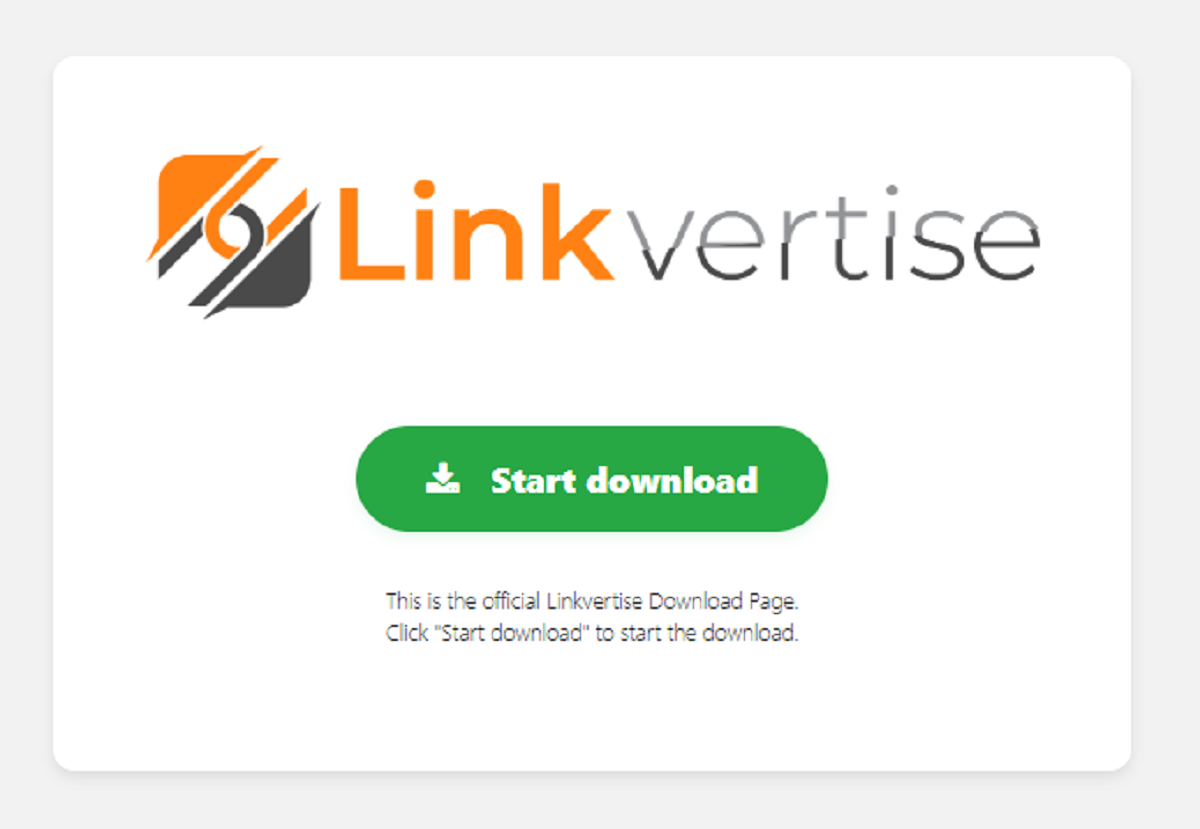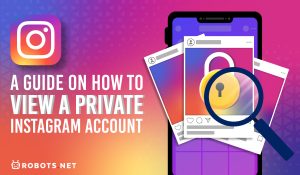Introduction
Surveys have become a common occurrence on the internet, often serving as a tool for collecting valuable information or as a means of generating revenue for website owners. However, it’s no secret that these surveys can be frustrating and time-consuming for users. As a result, many people are searching for ways to bypass surveys and access the desired content without the hassle.
Whether you’re trying to download a file, access exclusive content, or simply want to skip the tedious process of filling out surveys, this article will guide you through the various methods that can help you bypass surveys effectively and efficiently.
While it’s important to note that bypassing surveys may be in violation of the terms of service of certain websites, we understand the frustration that comes with encountering numerous surveys. Therefore, we’ll explore both the methods to bypass surveys and the potential risks and consequences associated with doing so.
By the end of this article, you’ll have a better understanding of how surveys work, why people seek to bypass them, and the different methods you can employ to make your online experience smoother. So, let’s dive in and explore the world of survey bypassing!
Understanding Surveys and their Purpose
Surveys are designed to gather information from users through a series of questions. They can range from simple feedback forms to in-depth questionnaires, and are used by businesses, organizations, and researchers to collect data and gain insights into various aspects of their target audience.
The primary purpose of surveys is to obtain valuable feedback and opinions. Companies use surveys to better understand customer preferences, improve products and services, and make informed business decisions. Researchers utilize surveys to gather data for academic studies or to collect information on specific topics.
Surveys are also used as a monetization method for certain websites. By requiring users to complete surveys in exchange for access to content or downloads, website owners can generate revenue from advertisers who pay for survey completions.
In the context of online surveys, they often involve questions related to personal information, shopping habits, product preferences, or demographic details. This data can be analyzed to create user profiles, deliver targeted advertisements, or improve user experience on websites.
While surveys can be a valuable tool for businesses and researchers, they can also be seen as an inconvenience by internet users. This has led to the rise in popularity of methods to bypass surveys and access the desired content without having to go through the survey process.
Now that we have a better understanding of surveys and their purpose, let’s explore why people are motivated to bypass surveys and the potential risks involved in doing so.
Why People Want to Bypass Surveys
Surveys, while serving a valuable purpose, can be a source of frustration for many internet users. Here are a few reasons why people seek to bypass surveys:
- Time-consuming: Surveys often require users to provide detailed information or answer a series of questions, which can be time-consuming. People who are in a hurry or looking for quick access to content may find this process burdensome.
- Privacy concerns: Some surveys require users to provide personal information, such as their name, email address, or even sensitive data. This raises privacy concerns as users may be hesitant to share their personal details online, especially with unknown third parties.
- Repetitive nature: Many users encounter the same surveys repeatedly when visiting different websites. This repetition can become tiresome and lead to a desire to bypass surveys altogether.
- Inaccessibility to desired content: Surveys are often used as a barrier to access exclusive content or to unlock downloads. Users who are eager to obtain certain files or access restricted content may find survey requirements to be an obstacle.
- Skepticism about survey legitimacy: There are instances where surveys may seem suspicious or unreliable. Users may question the authenticity of the surveys and the intentions behind collecting their data.
While these reasons explain why people want to bypass surveys, it’s essential to understand that bypassing surveys comes with risks and potential consequences. In the next section, we will explore these risks in detail to help you make an informed decision before attempting to bypass surveys.
The Risks and Consequences of Bypassing Surveys
Before considering bypassing surveys, it’s important to be aware of the potential risks and consequences involved. Here are some of the main risks to consider:
- Violation of Terms of Service: Bypassing surveys may be considered a violation of the terms of service of certain websites. If caught, you could face penalties such as account suspension or even legal action.
- Malware and Viruses: Some survey bypass methods may involve downloading third-party applications or accessing unreliable websites. This puts you at risk of downloading malware or viruses onto your device, potentially compromising your security.
- Data Breach: Bypassing surveys may involve providing personal information to unknown sources. This increases the risk of your data being mishandled or falling into the hands of malicious entities, leading to potential identity theft or fraud.
- Lack of Trustworthy Bypass Methods: While there are legitimate methods to bypass surveys, there are also numerous scams and dishonest websites that claim to offer survey bypass solutions. Falling for these scams can result in financial loss, compromised personal information, or further privacy risks.
It’s crucial to exercise caution and use reliable and trusted methods when attempting to bypass surveys. Always consider the potential risks and consequences before proceeding with any survey bypass technique.
Now that we understand the risks and consequences, let’s explore the various methods that can help you bypass surveys effectively and safely.
Methods to Bypass Surveys
If you find surveys to be an annoyance and want to skip them, there are several methods available to help you bypass surveys. Here are some commonly used techniques:
- Using Browser Extensions: There are browser extensions available that claim to bypass surveys automatically. These extensions work by detecting the presence of a survey and automatically navigating past it. However, it’s important to note that these extensions may not work on all surveys and could potentially pose risks, so exercise caution when using them.
- Disabling JavaScript: Many online surveys rely on JavaScript to function. By disabling JavaScript in your browser settings, you may be able to bypass certain surveys. However, be aware that disabling JavaScript can also impact the functionality of other websites and may not work on all surveys.
- Inspecting Element: This method involves using the browser’s developer tools to modify the webpage’s code and bypass the survey. By inspecting the survey element and removing or modifying certain parts of the code, you may be able to disable the survey overlay and access the desired content. This method requires some technical knowledge and may not work on all surveys.
- Using Survey Bypass Websites: There are websites specifically designed to help users bypass surveys. These websites typically require you to enter the URL of the survey and then they provide you with a direct link to the content or file you are trying to access. However, exercise caution when using these websites as they may contain ads, scams, or unreliable methods.
- Modifying URL Parameters: Some surveys can be bypassed by manipulating the URL parameters. By altering specific values in the survey URL, you may be able to skip the survey and directly access the desired content.
Remember, no method can guarantee 100% success in bypassing surveys, and some methods may be less reliable or riskier than others. Use these methods responsibly and consider the potential risks and consequences before proceeding.
Now that we have explored the various methods, let’s move on to some tips and precautions to keep in mind when bypassing surveys.
Using Browser Extensions
One of the methods commonly used to bypass surveys is by utilizing browser extensions. These extensions are designed to automatically detect and bypass surveys on websites. Here’s how you can use browser extensions to bypass surveys:
- Research and Choose a Trusted Extension: Start by researching reputable extensions specifically designed for survey bypassing. Look for extensions with positive reviews and a good track record of success in bypassing surveys. It’s important to choose a trusted extension to avoid potential risks.
- Install the Extension: Once you’ve found a trusted extension, install it in your browser. Most popular browsers, such as Chrome and Firefox, have their own extension marketplaces where you can find and install extensions easily.
- Enable the Extension: After installing the extension, ensure that it is enabled in your browser’s extensions settings. This allows the extension to function properly when you encounter surveys on websites.
- Visit a Website with a Survey: Navigate to a website that presents you with a survey. The browser extension should automatically detect the survey and attempt to bypass it.
- Confirm Successful Bypass: If the browser extension successfully bypasses the survey, you should be able to access the desired content or download without having to complete the survey. However, keep in mind that not all surveys may be bypassed successfully, as some websites may have more complex survey protection measures.
While browser extensions can be convenient to use, it’s important to exercise caution and choose trusted extensions from reputable sources. Also, keep in mind that extensions may not work on all surveys, as websites constantly update their survey protection methods to prevent bypassing.
Additionally, be aware that some browser extensions may introduce security risks or compromise your privacy. Always read the reviews and terms of service for the extension you plan to install, and regularly update your extensions to ensure you’re using the latest and most secure versions.
Now that you know how to use browser extensions to bypass surveys, let’s explore another method: disabling JavaScript.
Disabling JavaScript
Disabling JavaScript in your browser settings is another method commonly used to bypass surveys. Here’s how you can disable JavaScript to skip surveys:
- Access Browser Settings: Open the settings or preferences menu in your browser. The exact location can vary depending on the browser you are using.
- Find the JavaScript Settings: Look for the section that contains JavaScript settings. In most browsers, you can find this under “Privacy and Security” or “Content Settings.”
- Disable JavaScript: Once you locate the JavaScript settings, toggle the option to disable JavaScript. This will prevent the surveys, which often rely on JavaScript, from loading on websites.
- Clear Cache and Reload: After disabling JavaScript, clear your browser cache and reload the website that contains the survey. The survey should no longer appear, allowing you to access the desired content directly.
- Re-enable JavaScript: When you’re done bypassing the survey, you can re-enable JavaScript in your browser settings to restore normal browsing functionality.
It’s important to note that disabling JavaScript can impact the functionality of certain websites, as many dynamic features heavily rely on JavaScript. Additionally, not all surveys can be bypassed by disabling JavaScript, as some websites may have alternate methods of survey protection.
When using this method, it’s recommended to temporarily disable JavaScript and then re-enable it after bypassing the survey. This ensures that your browsing experience is not impacted in the long term.
It’s worth mentioning that different browsers may have variations in how you access and disable JavaScript. Consult your browser’s documentation or online resources for specific instructions relevant to your browser.
Now that you know how to disable JavaScript, let’s explore another method: inspecting element.
Inspecting Element
Inspecting element is a method that involves using the developer tools in your browser to modify the webpage’s code and bypass surveys. Here’s how you can use this method to bypass surveys:
- Access Developer Tools: Right-click on the webpage containing the survey and select “Inspect” or “Inspect Element” from the context menu. This will open the developer tools panel in your browser.
- Locate the Survey Overlay: In the developer tools panel, navigate to the “Elements” or “DOM” tab. Look for the HTML elements that make up the survey overlay, which is typically a pop-up or a section of the webpage that prompts you to complete the survey.
- Modify the HTML Code: Once you’ve located the survey overlay, you can modify its HTML code by right-clicking on the relevant element and selecting options such as “Delete” or “Edit HTML.” By removing or modifying the relevant code, you can bypass the survey and reveal the content beneath it.
- Test the Changes: After modifying the HTML code, check if the survey overlay has been successfully bypassed. If the survey no longer appears and you can access the desired content, then the inspection and modification were successful.
- Save or Reload the Page: If the changes have been successful, you can save the modified code (if permitted by the developer tools) or simply reload the page to view the content without the survey overlay.
Inspecting element requires some understanding of HTML and familiarity with browser developer tools. It’s also worth noting that the survey protection methods on different websites may vary, so this method may not always be effective.
Exercise caution when modifying the HTML code and ensure that you only make changes to the specific survey overlay elements. Making unintended changes to other parts of the code can break the webpage’s functionality.
It’s important to remember that bypassing surveys by inspecting element may not always be a guaranteed solution, and there is a possibility that the website may detect or prevent modifications.
Now that you’re familiar with inspecting element, let’s explore another method: using survey bypass websites.
Using Survey Bypass Websites
If you’re looking for a more convenient and straightforward method to bypass surveys, you can turn to survey bypass websites. These websites are specifically designed to help users bypass surveys and gain access to the desired content. Here’s how you can utilize survey bypass websites:
- Search for Survey Bypass Websites: Conduct an online search for survey bypass websites. There are several options available, so it’s essential to choose a reputable and trusted website.
- Visit the Survey Bypass Website: Once you’ve found a survey bypass website, visit their homepage or landing page.
- Enter the Survey URL: On the survey bypass website, enter the URL of the webpage that contains the survey you want to bypass. This can usually be found in the address bar of your browser.
- Click the Bypass Button: After entering the survey URL, click the bypass or skip button, depending on the instructions provided by the survey bypass website.
- Follow the Instructions: The survey bypass website may provide additional instructions or steps to follow in order to bypass the survey successfully. Make sure to read and follow these instructions carefully.
- Access the Content: Once the survey bypass process is complete, the website should provide you with a direct link or method to access the content or download you were trying to reach. You can now proceed to access the desired content without having to complete the survey.
While survey bypass websites can be convenient, it’s important to exercise caution and choose reputable and trusted websites. Some websites may contain ads, scams, or unreliable methods that can compromise your privacy or introduce security risks.
Before using a survey bypass website, consider reading reviews and checking user feedback to ensure that it is a reliable and trustworthy source. Additionally, keep in mind that survey bypass websites may not work on all surveys, as some websites may have more advanced survey protection measures.
Now that you know how to use survey bypass websites, let’s explore another method: modifying URL parameters.
Modifying URL Parameters
Modifying URL parameters is another method that can potentially help you bypass surveys. This method involves altering specific values in the survey URL to skip the survey and access the desired content directly. Here’s how you can modify URL parameters to bypass surveys:
- Identify the Survey URL: When you encounter a survey, take note of the URL in the address bar of your browser. This URL contains the necessary information to display the survey to users.
- Understand the URL Structure: Examine the survey URL to identify any parameters or variables present. Parameters are usually preceded by a question mark (?) and separated by ampersands (&).
- Modify the Parameters: Experiment with modifying the parameter values in the URL. Common parameters to look out for include “surveyid,” “offerid,” “pid,” or any other identifiers related to the survey. Try removing or changing these values to different numbers or characters.
- Test the Modified URL: After modifying the URL parameters, reload the page with the modified URL to see if the survey has been bypassed. If successful, you should be able to access the content or download without having to complete the survey.
- Note the Limitations: Keep in mind that not all surveys can be bypassed using this method. Some surveys may have more complex protection measures that cannot be bypassed through URL parameter modifications.
It’s important to exercise caution when modifying URL parameters, as it can lead to unexpected results or errors if done incorrectly. Only modify the parameters related to the survey itself, and avoid making unintended changes to other parts of the URL.
While modifying URL parameters can be a simple and effective method to bypass surveys in some cases, it’s important to understand that not all surveys can be bypassed using this method. Websites may have additional mechanisms in place to prevent bypasses, so results may vary.
Now that you’re familiar with the method of modifying URL parameters to bypass surveys, let’s move on to the next section, which covers tips and precautions to consider when bypassing surveys.
Tips and Precautions
When bypassing surveys, it’s essential to keep a few tips and precautions in mind to ensure a safe and successful experience. Here are some important considerations:
- Be Wary of Scams: Exercise caution when using survey bypass methods or visiting survey bypass websites. Look out for scams, misleading advertisements, or websites that ask for personal information. Stick to reputable sources and read reviews or seek recommendations from trusted sources.
- Utilize Virtual Private Networks (VPNs): Consider using a virtual private network (VPN) while bypassing surveys. A VPN helps protect your privacy by encrypting your internet connection and masking your IP address, making it more difficult for websites to track your activities or identify your location.
- Clear Cookies and Cache: Before attempting to bypass surveys, it’s advisable to clear your browser’s cookies and cache. This ensures that any previous survey-related data or cookies are removed, potentially improving the success rate of bypassing surveys.
While bypassing surveys can be tempting, it’s important to evaluate the risks and consequences discussed earlier in this article. Remember to consider legal and ethical implications before proceeding with any survey bypass method.
Additionally, keep in mind that bypassing surveys may be in violation of the terms of service of certain websites. If caught, you could face penalties, account suspension, or legal consequences. It’s crucial to weigh the benefits against the potential risks before attempting to bypass surveys.
Lastly, always stay informed about the latest survey bypass methods and techniques. Websites continually update their survey protection measures, so staying up to date will help you find more effective and reliable ways to bypass surveys.
By following these tips and taking necessary precautions, you can increase your chances of successfully bypassing surveys while minimizing risks to your privacy and security.
Now that we’ve covered important tips and precautions, let’s conclude this article on bypassing surveys and its various methods.
Being Wary of Scams
When it comes to bypassing surveys, it’s crucial to be wary of scams that can compromise your privacy or lead to potential harm. Here are a few tips to help you navigate through the potential scams:
- Research and Review: Before using any survey bypass method or visiting a survey bypass website, take the time to research and read reviews from trusted sources. Look for feedback from other users who have successfully used the method or website without encountering any scams or issues.
- Avoid Providing Personal Information: Be cautious of websites or methods that request personal information, such as your name, email address, or phone number, as this information can be misused or lead to identity theft. Reliable survey bypass methods typically won’t require you to divulge personal details.
- Stay Clear of Gimmicks or Unrealistic Promises: Be skeptical of survey bypass websites or methods that make outlandish claims or promise quick and easy survey bypass solutions. Legitimate methods will often require some effort or technical know-how, but they should be reasonable and straightforward.
- Watch Out for Malicious Downloads: Be cautious of websites or methods that prompt you to download software or files to bypass surveys. These downloads may contain malware or viruses that can harm your device and compromise your privacy.
- Trust Your Gut Feeling: If something feels too good to be true or feels suspicious, trust your instincts and proceed with caution. It’s better to be safe and opt for trusted methods rather than taking unnecessary risks.
Remember, the primary goal of scammers is to exploit individuals seeking to bypass surveys. By staying vigilant and exercising caution, you can protect yourself from falling victim to scams and ensure a safe and secure survey bypass experience.
Now that you’re aware of the potential scams to watch out for, let’s move on to the next tip: utilizing virtual private networks (VPNs).
Utilizing Virtual Private Networks (VPNs)
When bypassing surveys, utilizing a virtual private network (VPN) can greatly enhance your privacy and security. Here’s how you can benefit from using a VPN:
- Enhanced Privacy: A VPN encrypts your internet connection and masks your IP address, making it difficult for websites to track your online activities. This ensures that your survey bypassing activities remain anonymous and protects your overall online privacy.
- Bypassing Geo-Restrictions: Some surveys may come with geo-restrictions, preventing users from certain locations from accessing the content. By connecting to a VPN server located in a different region, you can bypass these restrictions and gain access to the content.
- Protection from Malicious Attacks: A VPN helps protect your device from potential malicious attacks when visiting survey bypass websites or using other bypassing methods. It adds an extra layer of security by encrypting your internet traffic and preventing unauthorized access.
- Securing Public Wi-Fi Connections: When accessing surveys or bypassing them on public Wi-Fi networks, your data can be vulnerable to interception. A VPN ensures that your internet traffic is encrypted, safeguarding your personal information from potential eavesdroppers.
When choosing a VPN, it’s important to select a reputable provider that offers strong encryption, a no-logs policy, and a wide range of server locations. Additionally, check for user reviews and ratings to ensure the VPN’s reliability and performance.
Keep in mind that while a VPN provides added privacy and security, it does not guarantee complete anonymity. It’s important to conduct your survey bypassing activities responsibly and abide by any applicable laws or terms of service.
By utilizing a VPN, you can enhance your privacy and security when bypassing surveys, allowing you to navigate the online landscape with peace of mind.
Now that you understand the benefits of using a VPN, let’s move on to the final tip: clearing cookies and cache.
Clearing Cookies and Cache
Clearing your browser’s cookies and cache is an important step to consider when bypassing surveys. By regularly clearing these temporary files, you can improve your bypassing experience and protect your privacy. Here’s how it can benefit you:
- Improved Success Rate: Clearing cookies and cache removes any stored survey-related data, allowing you to start fresh when attempting to bypass surveys. This can enhance the success rate of bypassing methods and prevent any residual survey requirements from appearing.
- Reduced Survey Tracking: Cookies are used by websites to track user activities and preferences. By clearing your cookies, you can limit the amount of data that websites can collect about your survey bypassing activities.
- Enhanced Privacy: Clearing cookies and cache helps protect your privacy by removing any stored personal information or login details that may be shared by websites. This helps prevent your browsing history and survey-related data from being associated with your identity.
- Increased Device Performance: Over time, cookies and cache files can accumulate and take up storage space on your device. By regularly clearing them, you can improve the overall performance and speed of your device.
Clearing cookies and cache is a relatively simple process and can be done within the settings of your browser. Here’s a general guide:
- Access Browser Settings: Open the settings or preferences menu in your browser. The exact location may vary depending on the browser you are using.
- Find the Privacy or Security Settings: Look for the section that contains privacy or security settings. In most browsers, you can find this under “Privacy and Security” or “Clear Browsing Data.”
- Select Cookies and Cache: Within the privacy or security settings, choose the option to clear cookies and cache. You may be able to customize the time range for which you want to clear the data.
- Clear the Data: Once you’ve selected the appropriate options, confirm the deletion to clear your cookies and cache. This process may take a few moments.
After clearing cookies and cache, you’ll have a fresh browsing session, which can improve your success rate when attempting to bypass surveys. Keep in mind that clearing cookies and cache will also sign you out of any authenticated sessions, so be prepared to log back in to the websites you use regularly.
Now that you know the benefits of clearing cookies and cache, let’s conclude this article with a summary of what we’ve covered.
Conclusion
Bypassing surveys can be a frustrating but sometimes necessary task for internet users seeking to access desired content or downloads without the hassle of survey requirements. Throughout this article, we have explored various methods to bypass surveys.
We discussed the purpose of surveys and why people are motivated to bypass them. Additionally, we highlighted the risks and consequences associated with bypassing surveys, such as violating terms of service, potential malware and viruses, and the risk of data breaches.
The methods we explored include: using browser extensions, disabling JavaScript, inspecting element, utilizing survey bypass websites, and modifying URL parameters. While these methods can be effective, it’s crucial to exercise caution and choose trusted sources to avoid scams or compromising your privacy and security.
We also provided several tips and precautions to consider: being wary of scams, utilizing a virtual private network (VPN) for enhanced privacy, and regularly clearing cookies and cache to improve success rates and protect privacy.
Keep in mind that bypassing surveys may not always be legal or ethical, so it’s important to tread carefully and consider the potential risks before proceeding.
In conclusion, if you choose to bypass surveys, always prioritize your privacy and security by using trusted methods, employing VPNs, and following recommended precautions.
Remember, the methods discussed in this article may not guarantee a successful bypass in all cases, as websites continually update their survey protection measures. It’s crucial to stay informed about the latest techniques and to approach survey bypassing responsibly.
By arming yourself with knowledge and employing the appropriate methods and precautions, you can navigate the world of online surveys with greater ease and efficiency. Good luck in your survey bypassing endeavors!

























